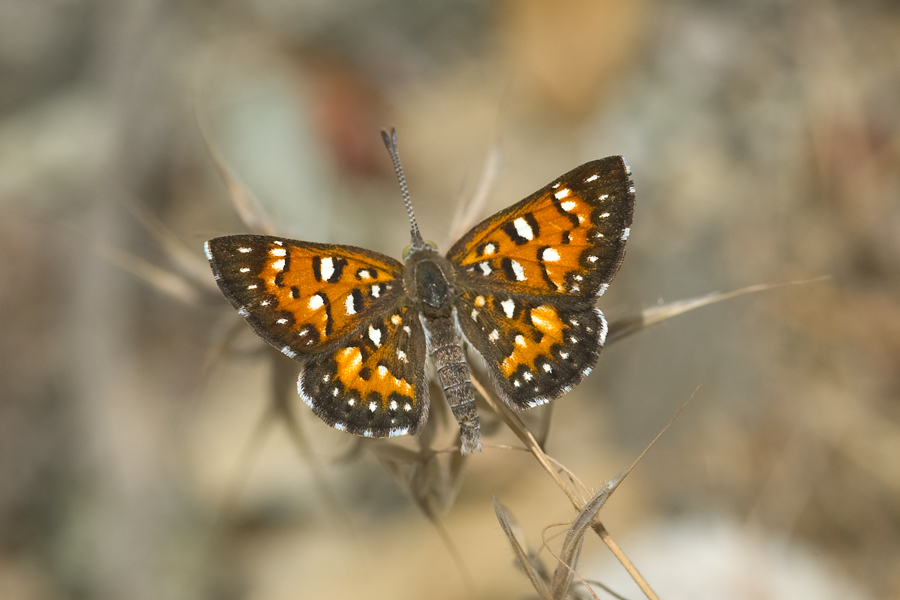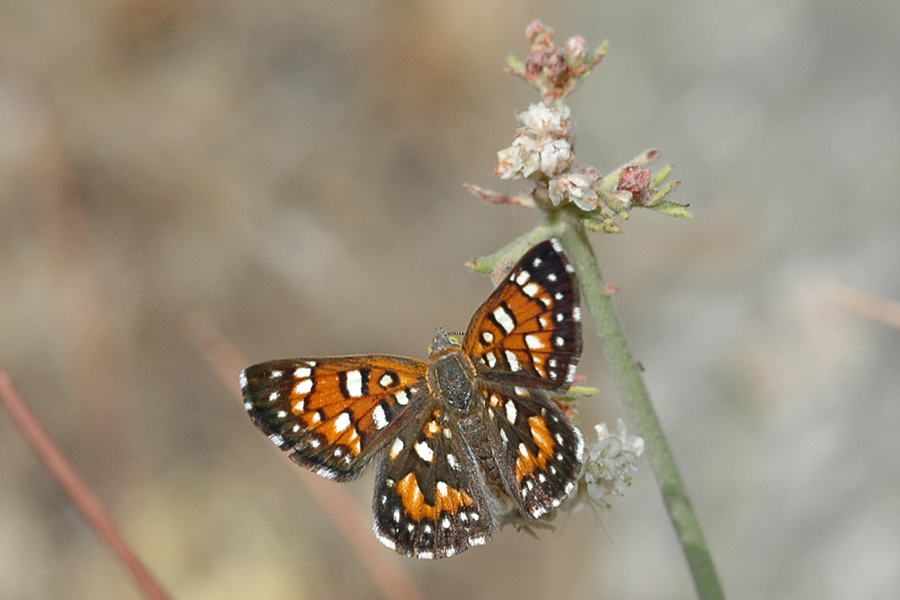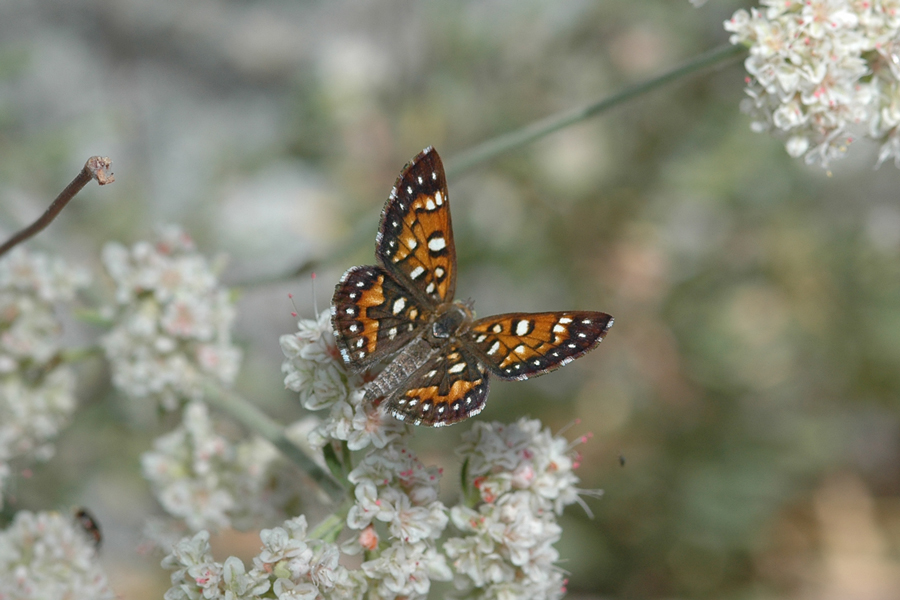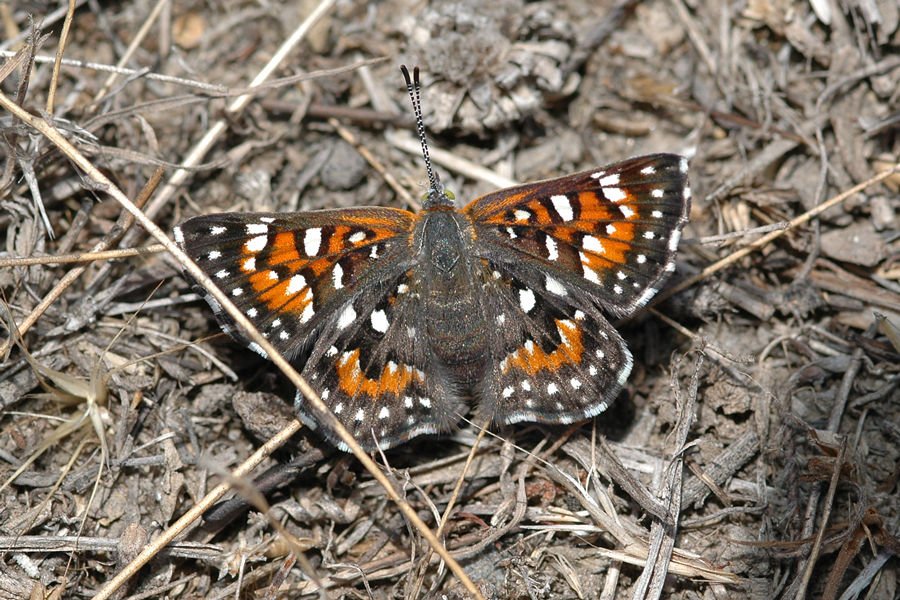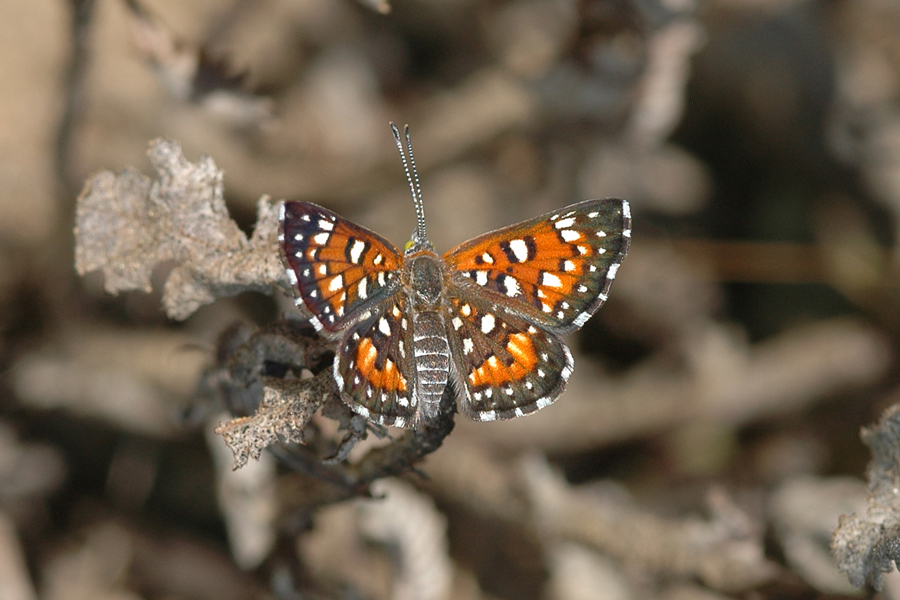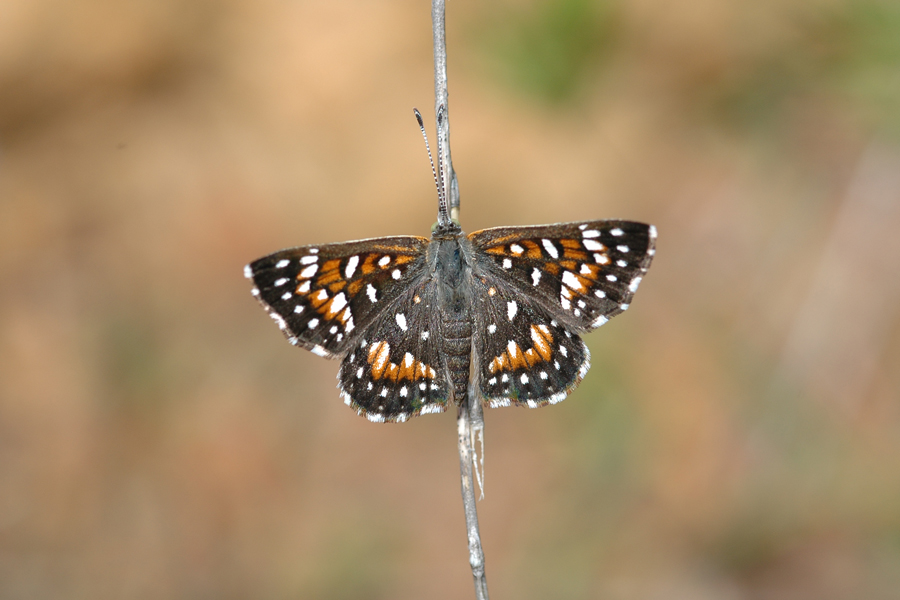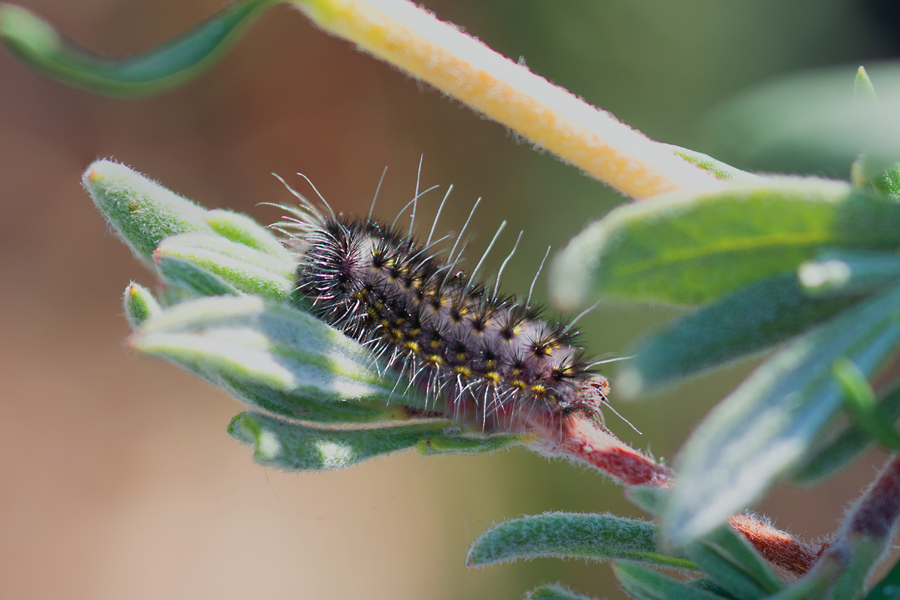Apodemia virgulti virgulti
Behr's Metalmark
This metalmark is perhaps the most common mormo-complex member in southern California. Its type locality is the Los Angeles area, but it is found south to San Diego County and east well into Riverside County and the San Bernardino foothills, using California buckwheat as its larval food plant. It flies in at least two broods. With rare exceptions, there is orange coloration against a brown ground color on both the forewings and hind wings. Males are usually darker and smaller than females. At Cactus Spring Trail, some males have little or no orange on the hind wings, and females can big and brightly colored, almost like cythera, but they still fall within nominate virgulti according to Gordon Pratt (pers. comm.); John Emmel agreed that they looked odd, but deferred to Gordon when we discussed it via email years ago.
Even in the 19th century, there were questions about whether virgulti was a full species, and Boisduval decided against naming it himself, having seen what became mormo earlier. The species mormo was named six years earlier than virgulti (as Lemonias mormo), in 1859, by the Felders (father and son Austrian naturalists), from what they called "Salt Lake", which some (inc. Opler and Powell in their 1961 overview) took as being the bigger salt lake in Utah, understandably (and this was Utah territory until 1864). In 1865, Hans Hermann Behr named a specimen from "Sonora" as Nemeobius virgulti. Thanks to some sleuthing by John Emmel in the early chapters of the 1998 Systematics book, we know that Pierre Lorquin collected both of these specimens. Most likely, mormo was collected in 1857 when Lorquin collected around Washoe Lake, just over the current California border in Nevada. Lorquin sent butterflies from this trip to Boisduval in Paris, but the Felders came into possession of extras via a dealer and published before Boisduval. When Lorquin went to Los Angeles in spring, 1859, he collected what Behr would later name virgulti when Boisduval passed on naming it. The Felders called this sonorensis in print in 1865, but not before Behr's own publication. For most of the 20th century, virgulti was considered a subspecies of mormo (as was mejicanus deserti). The "Three Biotypes" paper of Pratt and Ballmer in 1991 showed that more than one species was almost certainly in play among all the mormo populations, and Paul Opler followed Gordon Pratt's guidance in his 1999 guide Western Butterflies, listing mormo, virgulti, and mejicanus as separate species. It took years for that arrangement to catch on in the popular guides. The 2004 names list by Opler and Warren* helped, even as it called the arrangement "tentative". But the influential 2008 catalog of Jonathan Pelham also had virgulti as a full species, and further study has only suggested that there are more than three or four species in what we call the "mormo complex".
* Paul Opler and Andrew Warren, Butterflies of North America. 2. Scientific Names List for Butterfly Species of North America, north of Mexico, published Jan. 2004.
